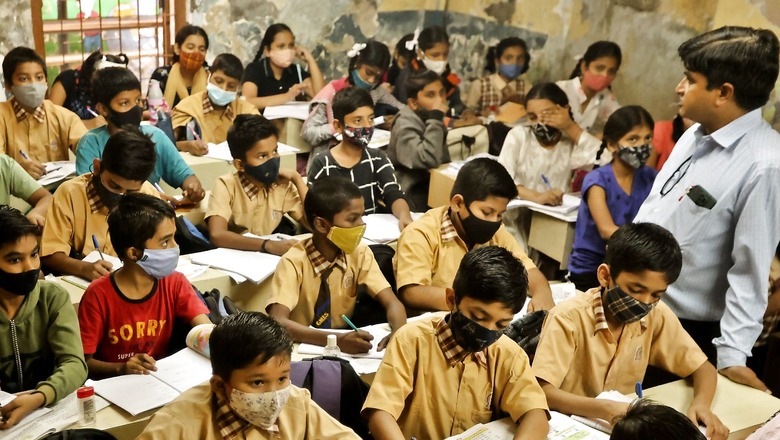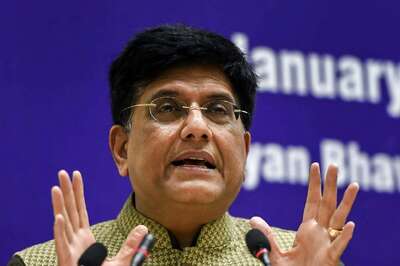
views
Raman came to me two years ago with a request for a job. He was 10 + 2 from a state board. He was quite sharp and talented.
I asked him: “What will you do?”
He said: “Anything.”
“Can you operate a computer?”
“No.”
“Can you make calls?”
“Yes, I can if I am guided.”
“Can you learn typing?”
“Sure, but I have no money to pay the fee and more importantly, I need a job as I have to support my family also.”
I gave him the job, trained him in typing and now he has moved on quite well in his career. Raman’s is not an isolated story. His need was to pick up some skills while being in school, but he couldn’t, as there is no provision for imparting skill or vocational training to our students in schools, though the new National Education Policy-2020 (NEP-2020) seeks to institutionalize vocational training.
The NEP 2020 visualizes that by 2025, at least 50% of learners will have vocational exposure through school and higher education. Every child is supposed to learn at least one vocation and be exposed to several more. There will be “no hard separation” between “vocational and academic streams”.
Universal access to all children to quality holistic education including vocational education from preschool to Class XII will be ensured, while allowing for flexibility and choice of subjects. There will be 10 bagless days in a year for school students during which they will be exposed to a vocation of choice.
It will further be supplemented by experiential vocational learning after 10 years of schooling, from Class IX to XII. Skill labs will also be set up and created in schools in a hub and spoke model, which will allow other schools to use the facility.
Needless to say that NEP-2020 is a great move towards vocationalization of school education but certain corrective measures will do wonders. The story of Raman conveys many things.
First, he discontinued education as he had to support his family’s livelihoods. He told me that his father was not in a position to finance his higher studies. Second, he did not get any employable skill despite spending 14 years of his life in a senior secondary school. Third, efforts were never made to ask him if he would like to continue his higher studies and if yes from where he will get the resources. Fourth, earning while learning is still a distant dream in our country. Fifth, more attention is required to be given to rural areas.
I will just make a small but important recommendation. It is absolutely feasible and implementable in a hassle-free manner. Make one vocational course like a subject mandatory for all students from Class 9 to Class 12. For example, if someone chooses the stream of electrician as a subject in Class 9, he or she will have to study the subject till the completion of Class 10.
Every student from weaker sections of society should also be given Rs 500 as monthly stipend, while a free kit should be given to all. It will certainly add a little bit of extra financial burden to our vast state exchequer but will do wonders in the long term. If a student wishes to continue with the vocational subject even during Class X to XII, he or she should be given an enhanced stipend of Rs 1,000 per month. Believe me it will do wonders. Each of them will be certified after completing four years of studying a particular vocational course.
In a country as vast as India where a large number of students clear Class XII examination annually but only a small chunk of them get into colleges for higher studies as is reflected in our gross enrolment ratio (GER) of less than 30 per cent, we need to equip them with certified and useful market oriented skills.
For want of employable skills as in the case of Raman, they become a part of the unorganized sector where they have to undergo all sorts of exploitation before they start earning a decent salary to meet their bare minimum needs. India has to move them out of this vicious circle by mainstreaming them through skills. Imagine the kind of ease they will have when they go abroad, seeking better avenues as they are certified skilled workforce. It will not only be a win-win situation for the government and our young lot but will also be a game changer.
Ours is one of the largest education network in the world with over 15 lakh schools taught 25.38 crores students in 2020-21, as per the Unified District Information System for Education(UDISE) report.
However, I have a word of caution and apprehension as well. A great grand goal can be achieved only through sustained, concerted efforts for which we need to have will power and steadfastness in implementing critical reforms.
We will have to make a little bit of investment in setting up skill centres in every high school across the country along with the recruitment of vocational teachers. It is not a big task for us at a time when we are aspiring to be a $ 10 trillion economy in the years to come. The quotient of technical and vocational education and training (TVET) institutions will have to be added in our schools.
Let us not forget the fact that inculcating skills in our young children means encouraging them towards entrepreneurship as well. They will get exposed to emerging technologies such as artificial intelligence, drones, internet of things (IoT), Real Time Analytics, and so on.
Automation and data exchange are at the core of the fourth Industrial Revolution – Industry 4.0. Accordingly, we will have to train our young brain. A miniscule of them will get into the government and services sector, while the majority of them find their ways into the manufacturing and service sector, which is full of possibilities and opportunities in our country.
Unfortunately, we are not able to reap the benefits of the manufacturing sector in the age of liberalization, privatization and globalization due to lack of skilled workforce. We can make the manufacturing sector contribute at least 30 per cent to our gross domestic product (GDP) from the current 17 per cent and gives employment to around 12 per cent workforce of the country’s, to enhance employment in manufacturing sector at least at the level of 25 per cent we will have to make the right kind of efforts and in the right direction.
The writer is Co-Founder and MD, Orane International, Training Partner with National Skill Development Corporation (NSDC), Network Member, India International Skill Centres, an initiative of GoI. The views expressed in this article are those of the author and do not represent the stand of this publication.
Read all the Latest News and Breaking News here



















Comments
0 comment